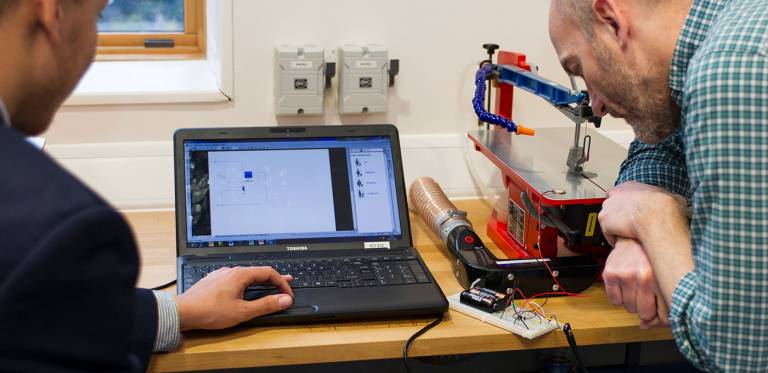Decoding Learning
The proof, promise and potential of digital education.

24 May 2018
Researchers at the UCL Knowledge Lab worked with colleagues at University of Nottingham and Nesta to review the impact and variety of educational technology innovations. The team produced a report: Decoding Learning: The proof, promise and potential of digital education.
No technology has an impact on learning on its own: success depends on how it is used
- Digital technologies do offer opportunities to transform learning and teaching; however, the degree of transformation is limited by the existing education systems, and a lack of information about the contextual factors that influence successful innovation.
- Decoding Learning shows that technology can have an impact on learning outcomes – if it is used to support powerful learning acts* such as learning through making, learning through inquiry and learning from assessment.
- The most effective results identify the learning activity that needs to be supported and then apply technology to support that learning e.g. learning through practicing or learning through inquiry.
- The report identifies over 200 innovations that show evidence of promise and potential for successful learning.
An example of "learning through making":

Recommendations for change
To realise the potential of using digital technologies as a teaching tool we must:
- Focus on the learning activity not technology – no single piece of technology is a 'silver bullet' for education. Focussing on the learning activities that a piece of technology can support is a good way to make better use of what we've got.
- Support the teacher – to achieve the full potential of using digital technologies in learning, teachers need support and training.
- Link home, school and the community – one of the major benefits of technology its ability to turn the world into a learning place. Technology such as cloud computing and mobile devices means learning need not stop at the school gates.
Gaps in innovation
Decoding Learning reveals several gaps in innovation, where few widely available products support many powerful learning activities – filling these gaps represents both an educational and commercial opportunity. Examples include:
- Formative assessment - analytic tools and data management can provide learners and teachers with detailed feedback about their performance as they learn – which is a powerful way to personalise and assist learning.
- Expert tutorial - one to one tuition remains one of the most successful ways of learning; conferencing software and adaptive technologies offer opportunities to recreate that tutorial conversation at scale.
- Structured collaboration - online tools can be useful for linking teachers and students, but many research-driven innovations have yet to make their way into the classroom, creating an opportunity for developers and teachers alike.
Next steps: link industry, research and practice
For Nesta, the most powerful recommendation from the report was the need to bring teachers, researchers and industry together to create new learning products and services aligned to successful learning themes. Nesta aims to be instrumental in facilitating this dialogue and championing effective innovations to schools everywhere. The key point here is that these groups must work together BEFORE the products are designed not after they are too far down the line to be changed.
 Close
Close

